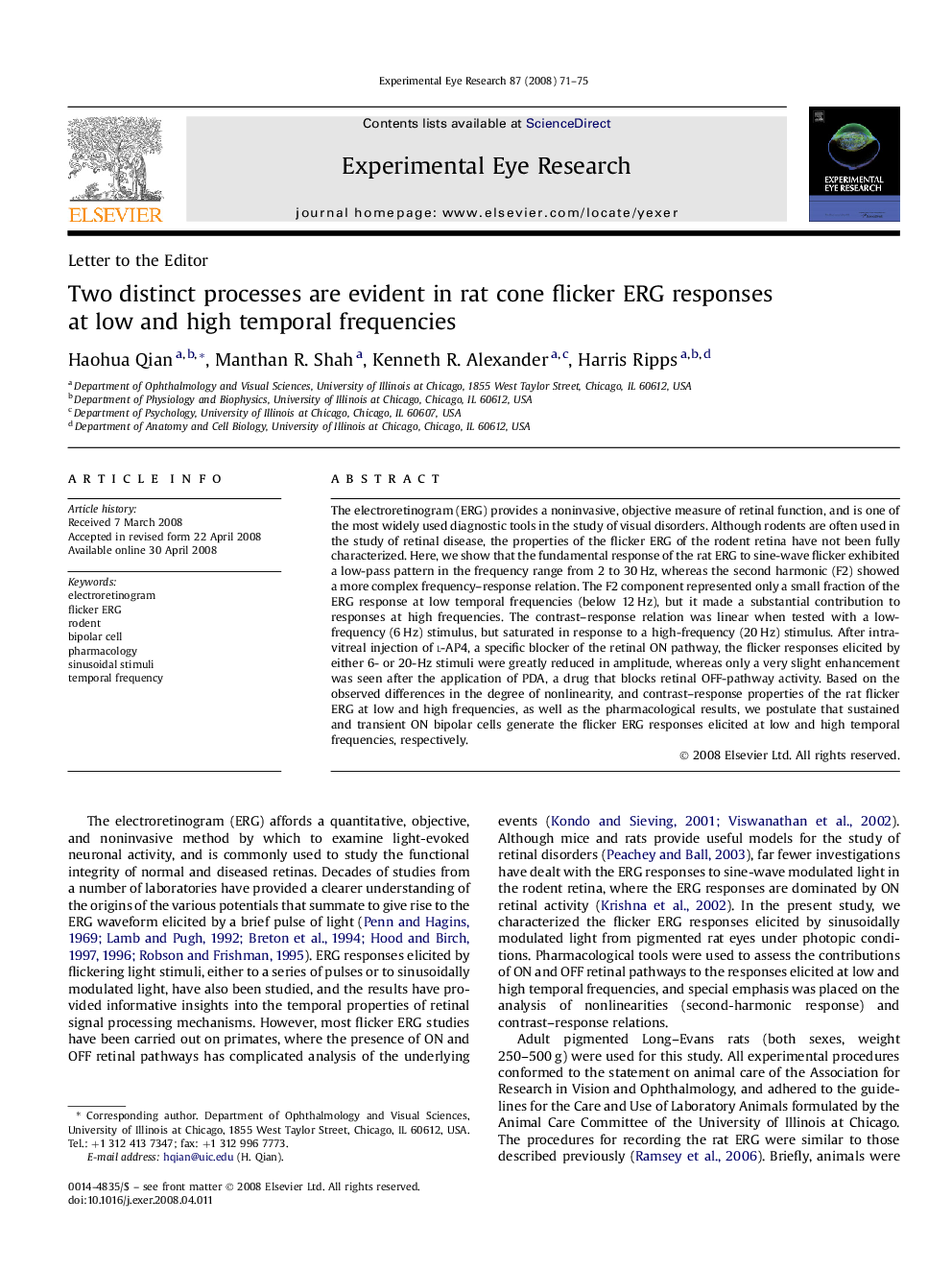| Article ID | Journal | Published Year | Pages | File Type |
|---|---|---|---|---|
| 4012807 | Experimental Eye Research | 2008 | 5 Pages |
The electroretinogram (ERG) provides a noninvasive, objective measure of retinal function, and is one of the most widely used diagnostic tools in the study of visual disorders. Although rodents are often used in the study of retinal disease, the properties of the flicker ERG of the rodent retina have not been fully characterized. Here, we show that the fundamental response of the rat ERG to sine-wave flicker exhibited a low-pass pattern in the frequency range from 2 to 30 Hz, whereas the second harmonic (F2) showed a more complex frequency–response relation. The F2 component represented only a small fraction of the ERG response at low temporal frequencies (below 12 Hz), but it made a substantial contribution to responses at high frequencies. The contrast–response relation was linear when tested with a low-frequency (6 Hz) stimulus, but saturated in response to a high-frequency (20 Hz) stimulus. After intravitreal injection of l-AP4, a specific blocker of the retinal ON pathway, the flicker responses elicited by either 6- or 20-Hz stimuli were greatly reduced in amplitude, whereas only a very slight enhancement was seen after the application of PDA, a drug that blocks retinal OFF-pathway activity. Based on the observed differences in the degree of nonlinearity, and contrast–response properties of the rat flicker ERG at low and high frequencies, as well as the pharmacological results, we postulate that sustained and transient ON bipolar cells generate the flicker ERG responses elicited at low and high temporal frequencies, respectively.
